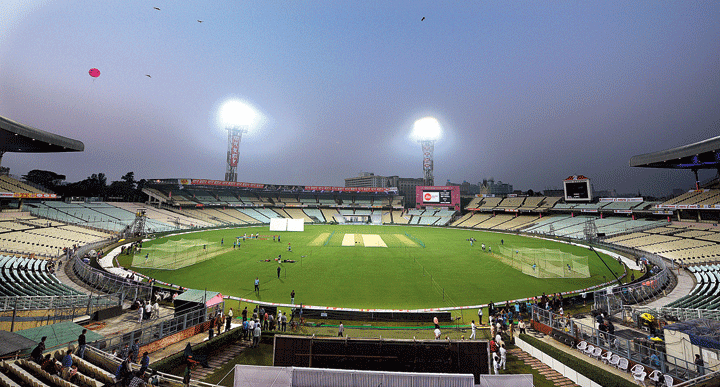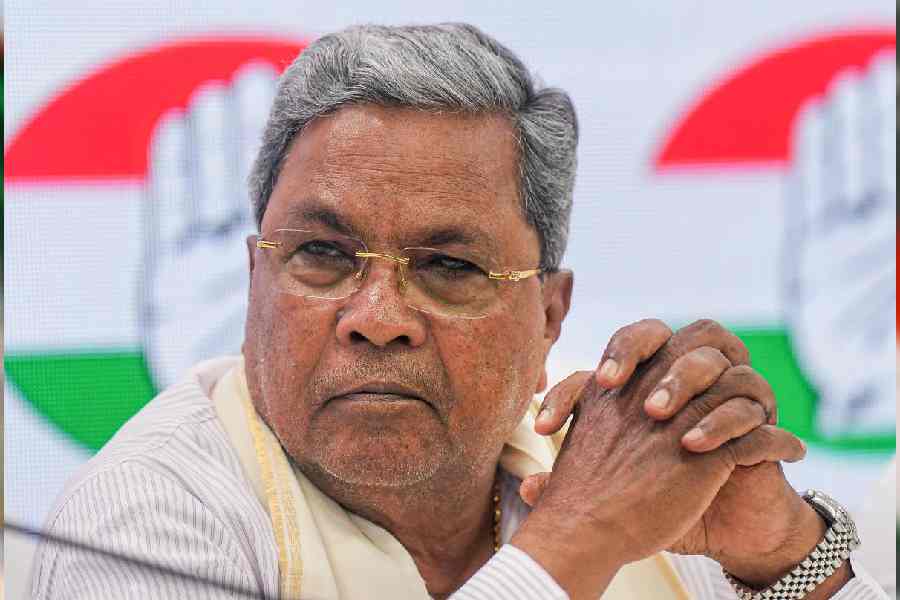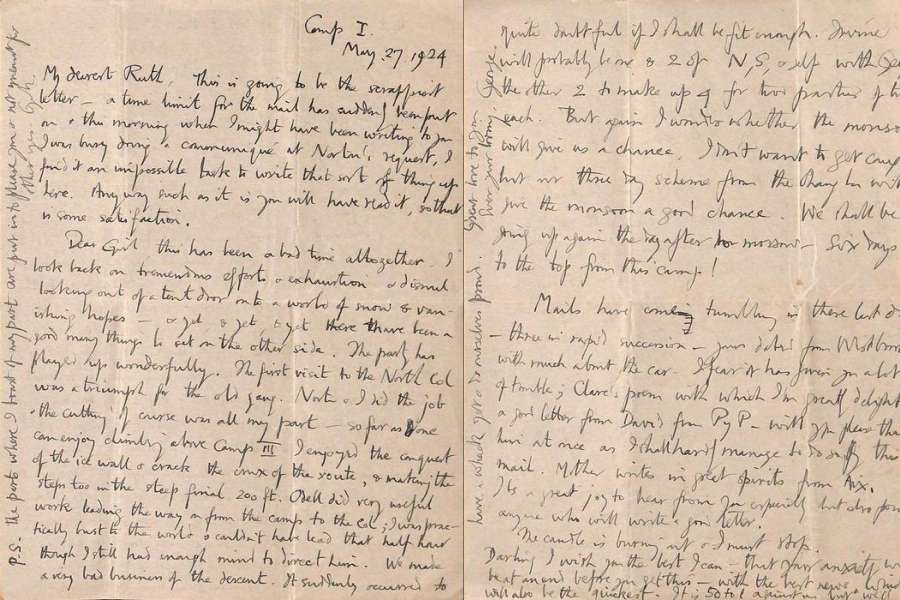I am as old as my home itself, if not older. I was there when cricket began to be played by the men in white flannels at the park named after the sisters of Lord Auckland in 1864, by which time Sir John Lawrence was residing at the Viceroy’s House, a little jog away.
I was there in 1904 when Ranjitsinhji, the prince of cricket, playing for the Calcutta Cricket Club (later to become the CC&FC), leg glanced one for four, cheered on by the hundreds who had come to watch the great man play.
Over the years, I saw the big names showcase their skills on the greens — Jack Hobbs and Herbert Sutcliffe turned out to open, not for the MCC but for the Maharaja of Vizianagaram.
Palwankar Baloo, the left-arm spin wizard, played for Natore XI, the team founded by Maharaja Jagadindra Narayan Ray, whose rivalry for cricket supremacy with Nripendra Narayan Bhup Bahadur, the Maharaja of Cooch Behar, helped develop and spread the game in Bengal.
Calcutta was different then. The breeze from the river would flow in every afternoon, with no obstacles to its way over the ground. The wooden pavilion, built in 1871, was the place to be in during the winter as one saw Arthur Gilligan, the Sussex and Cambridge fast bowler who captained an MCC team to India in 1926-27, lead out a side including the lethal Maurice Tate — possibly the first bowler who used the seam as bowling strategy — against an Indian XI in what was the first “unofficial” Test played at my home.
Seven years later, I watched as the unofficial turned official. C.K. Nayudu, the dashing colonel, stepped out for the toss with the Bombay-born and Bodyline-tainted Douglas Jardine on January 5, 1934, the first Test to be played at my home.
A crowd of about 19,000 and I watched as the left-handed James Langridge struck a delightful 70 off an attack comprising the likes of Nissar and Amar Singh and the then 22-year-old Vijay Merchant made a flawless 54 before being foxed by the left-arm spin of Hedley Verity, the great bowler who would tragically die in Italy during World War II.
The war would mean one would have to wait a good 15 years for the next Test, by which time India had become Independent, Mahatma Gandhi had been assassinated and Jawaharlal Nehru was the Prime Minister. The West Indies were in India, and Calcutta’s fondness for teams from the Caribbean began with Everton Weekes, one of the 3Ws, striking a hundred in each innings. Local favourite Mushtaq Ali made a stroke-filled 106 in his second essay.
The years passed; individuals sparkled. Deepak Shodhan got a hundred on debut against Pakistan; Bengal hero Pankaj Roy made a painstaking 100 versus New Zealand. But results still eluded my home — five drawn Tests in 22 years — and I wondered whether I had any role in it.
The result drought ended when Ian Johnson’s Australians visited my city in 1956 and beat us by 94 runs, Richie Benaud picking up 11 wickets.
Two years later, the West Indies inflicted the heaviest defeat we have ever suffered at my home, by an innings and 336 runs,
Rohan Kanhai getting 256 and Hall and Gilchrist tormenting the Indians.
But such was the infectious spontaneity of Caribbean cricket that Calcutta, which had hitherto been a football-crazy city, took to a sport once considered the preserve of the elite with passion.
Winter would mean cricket. The ground, whose capacity would increase over the years with the Ranji Stadium being added, would be packed. The demand for tickets would sky-rocket. Spectators would come with picnic baskets stuffed with goodies — sandwiches from Flurys or luchi-torkari from home. This passion was reinforced by India’s first Test win at my home, against Ted Dexter’s Englishmen in the winter of 1961-62.
The wicket at the Eden helped fast bowlers right through to the sixties. From Tate to Shute Banerjee to Hall and Gilchrist, Lindwall and Miller, the pacers always got something from the pitch. But with the advent of the spin quartet, all that changed.
The wicket became a slow, turning track which helped our great spinners, egged on by the vociferous 90,000-strong crowd, script victory against Tony Lewis’s England in 1972-73 and Clive Lloyd’s West Indies two years later, with Calcutta’s favourite Gundappa Viswanath getting a magical 139.
The tables were turned two years later, with Tony Greig’s tenacious band of Englishmen inflicting a crushing defeat on India. Calcutta was gutted but not shamed: a packed house turned up on the last morning to watch the visitors score the meagre 16 needed for a 10-wicket win — and in the process turned into global legend the city’s already formidable reputation as a lover of the game.
But for much of the next decade, the pitches would be “dead”. Seven of the eight Tests played from 1978 to 1987 would end in draws, with the glorious exception of December 1983 when the incomparable Malcolm Marshall put on an exhibition of pace and movement to earn the West Indies an innings win.
A year later, the dullest of draws threw up a special talent. Mohammed Azharuddin, who got a fairly stodgy hundred on debut but made up for it in the years to come with a series of scintillating innings that made him a perennial ground favourite.
And then came the World Cup of 1987. My home got a facelift — it was the venue for the final — and though India were not playing, a full house cheered on Allan Border’s Aussies as they beat England to the Cup.
The game was changing and so did my home. Floodlights were added and the first game to be played in the dark was the Hero Cup semi-final against South Africa in 1993, a cracker of a game that India won in the last over.
But if there were cheers, there were heartbreaks too. The riots of the sixties, the violence during a football match in the eighties in which 16 fans died in the stands and the shame of 1996, when the World Cup semi-final had to be abandoned because of unruly crowd behaviour, remain horrible scars.
Amid all this the game continued. The great comeback of 2001 with V.V.S. Laxman’s epic 281 remains etched in the memory. As does Rohit Sharma’s 264 in an ODI in 2014.
And today, when the first pink-ball Test under lights gets under way, spare a thought for me — I, who provided service for over 150 years.
Do you know me? Unlikely that you do.
I am just a keen observer of the game, of its history, of its evolution. I am Gangaram, the heavy roller used to prepare the wicket that has been the stage for legends. At cricket’s paradise, my home, the Eden Gardens.










